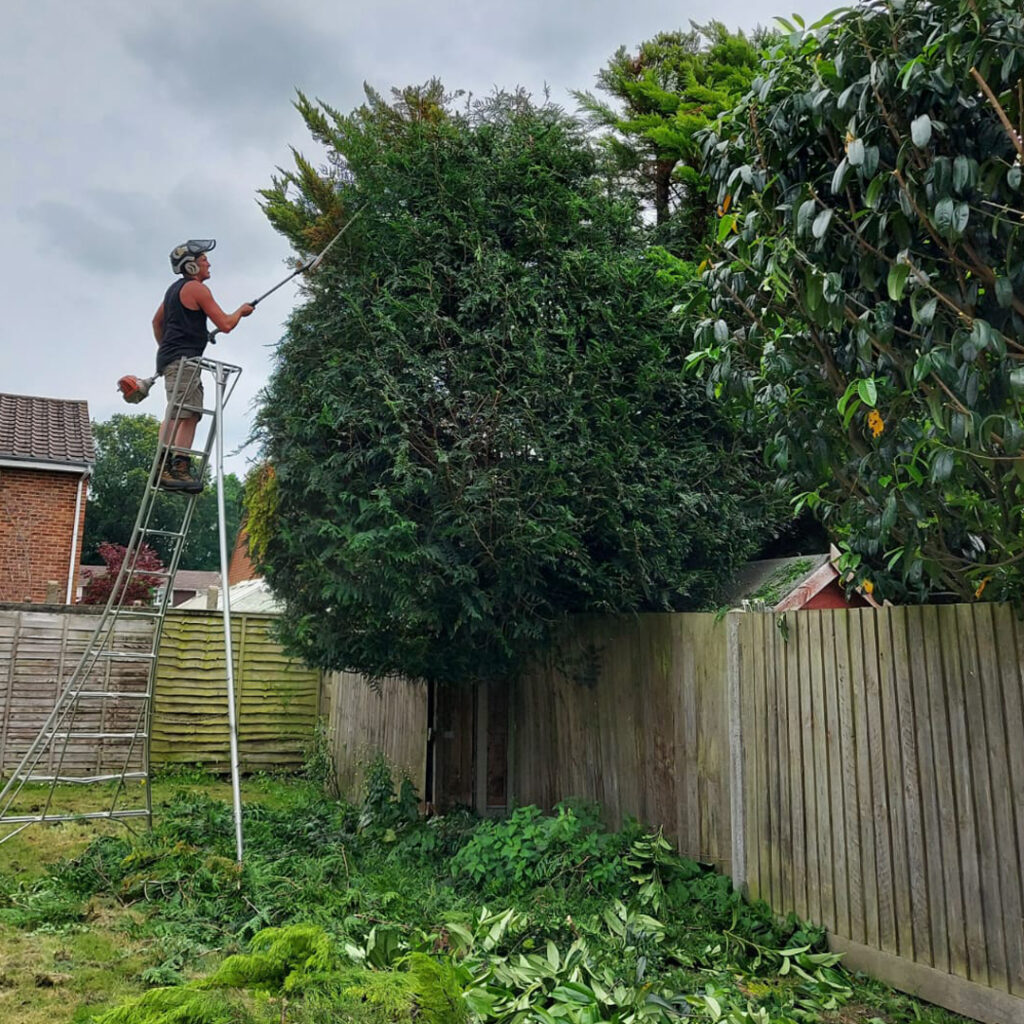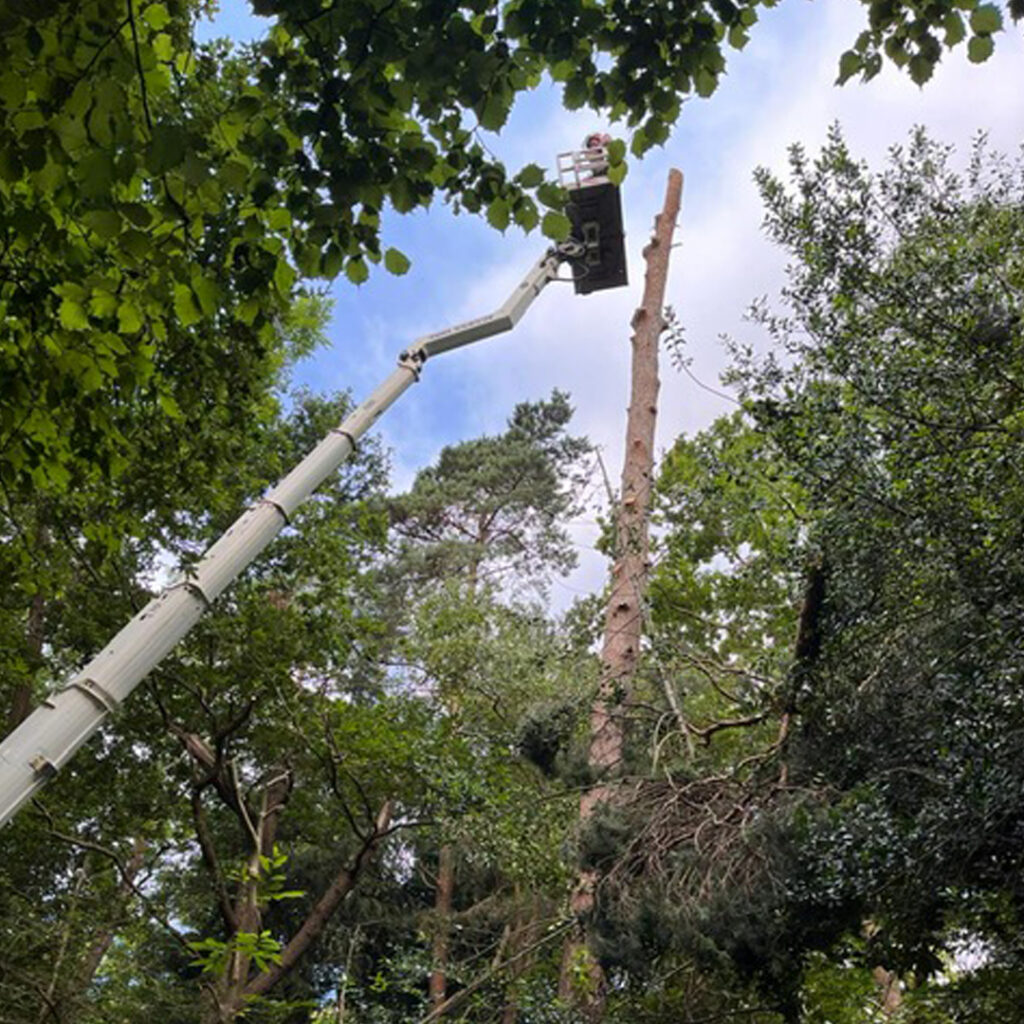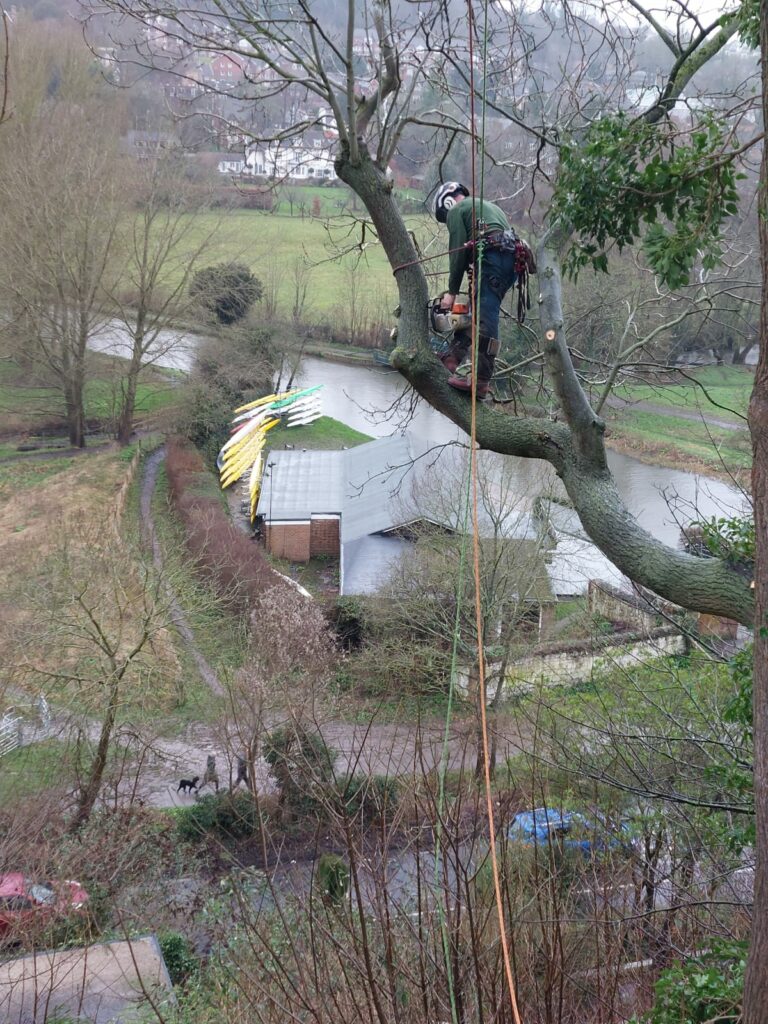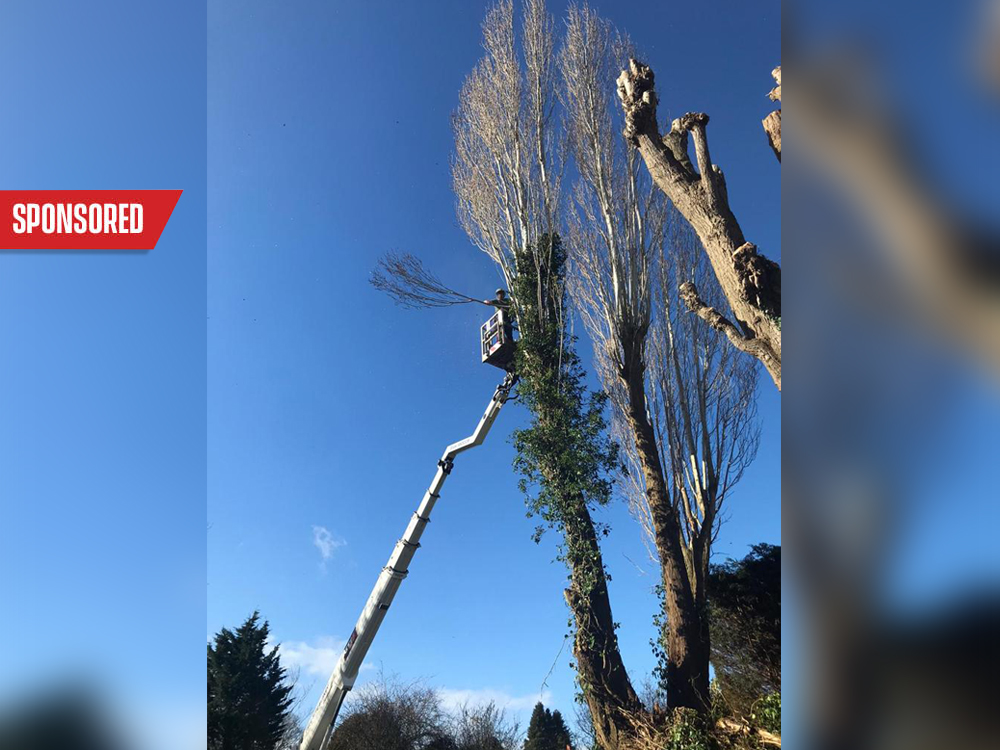Brackendale Tree Care has valuable advice to help you care for your trees in winter
At this time of year, your garden will probably look as if it’s settled down for winter. That surely means your jobs for the year are all wrapped up. All you need to do now is feed the birds and enjoy your garden from the warmth of your home.
However, winter is the perfect time to crack on and care for your trees.
Not only is winter the ideal time for tree care from Mother Nature’s perspective, but it’s also a great time for us humans. Other garden jobs, such as weeding, lawn mowing and hedge trimming aren’t needed so we have time to lavish on our trees instead. And after all, what’s better than getting outside into the fresh air and work up an appetite for all that hearty winter food?


The two big tree-related jobs for the winter are winter pruning and planting bare rooting trees.
Job 1 – winter-pruning your trees
It’s nearly always better to prune your trees in the winter than in the spring or summer. There are a host of reasons for this, which we’ll now go into.
For deciduous trees at least, the lack of leaves makes it far easier to see what you’re doing. This means you’re less likely to trim your trees back too far or into a shape that you’re not happy with. There’s also the benefit of having almost no leaves to sweep up afterwards – only the branches and leaves. You’ll also know that nesting birds won’t be an issue – it’s only from March onwards that nesting becomes something to bear in mind
Because trees are dormant in the winter, their sap is less active. Sap delivers water and nutrients throughout the tree which may ‘bleed’ when the tree is cut. Too much bleeding can shock your tree so it’s important to make sure you’re pruning at the right time of year. Most trees are best pruned in the winter, although there are some such as magnolia and birch which should be pruned at a different time of year.
Winter pruning is a great way of reinvigorating trees and bushes that were beginning to look tired or straggly. Successful winter pruning can encourage bushy, healthy growth, helping revive a previously tired-looking specimen.
Pruning during the winter also helps prevent diseases. That’s because the bacteria, insects and fungi that carry the diseases are dormant or dead. So, by pruning during the winter months, your tree is less likely to pick up a serious disease.
Job 2 – plant bare rooted trees
Another job that’s perfect for the winter months is planting bare rooted trees. Loved by gardeners and tree surgeons alike, bare rooted trees are the best choice for anyone wanting to enhance their garden with healthy, strong plants.
Using bare rooted trees and hedges gives you a better range of plants to choose from, thanks to the range of specialist nurseries that deal with bare rooted plants. They’re also far better value than pot-grown plants giving you a healthy sapling for a bank-balance friendly price. This makes bare-rooted trees and hedges a must-buy for anyone wanting to plant lots of trees or a new hedge.
There are a few things to remember when planting bare rooted trees:
1. Plant bare-rooted trees quickly as you can
The longer you leave your bare rooted trees unplanted, the more moisture they will lose from their roots. And the more moisture they lose, the lower your chances of having a healthy tree in your garden. If you can’t plant your tree immediately, store them somewhere cool (a garage or shed is perfect) with their roots wrapped in a plastic bag.
2. Stake your bare-rooted tree after planting
Staking your bare rooted trees will help them establish more successfully by keeping the roots healthy. By keeping your new tree in a stable position, you minimise the chances of torn roots. It can take as much as two years for a new tree to fully anchor itself into the soil, which makes this step especially important.
3. Water trees thoroughly in the first year after planting
Although your new tree or hedge won’t need water while it’s dormant, as soon as you start seeing leaves bursting into bud, it’s time to water. Water your tree thoroughly (a full watering can is perfect) once a week – or more often if the weather is dry. In especially dry, warm weather you should water your new tree two or three times a week to help it establish.
Get in touch for help with winter pruning and planting

Winter pruning and planting bare rooted trees are tasks that your tree surgeon can advise on and help with. If you have questions or would like us to look after your pruning and planting, get in touch and we’ll be happy to help.













Comments